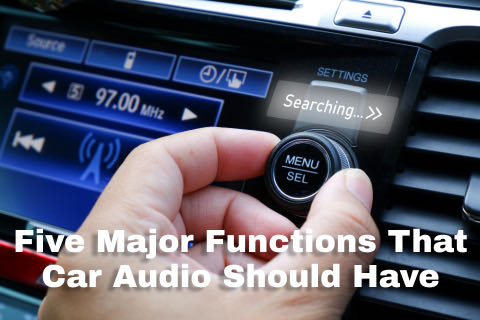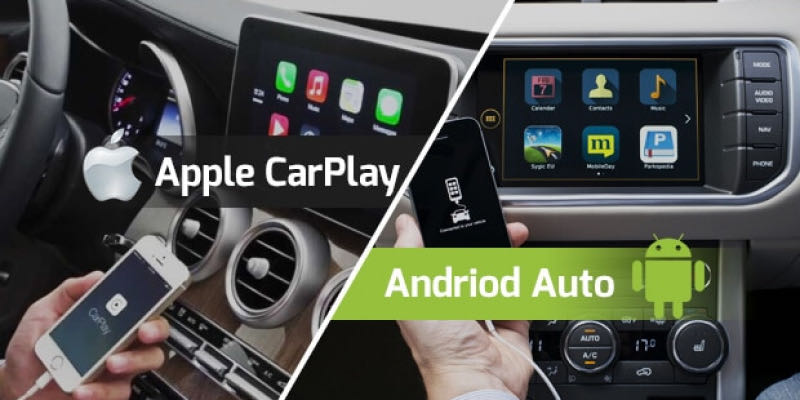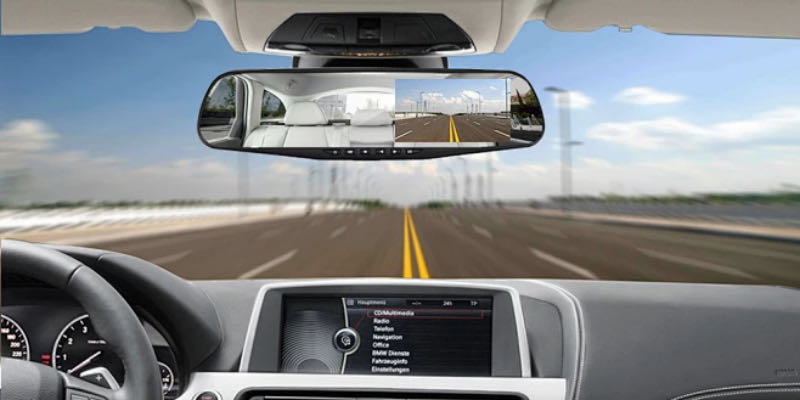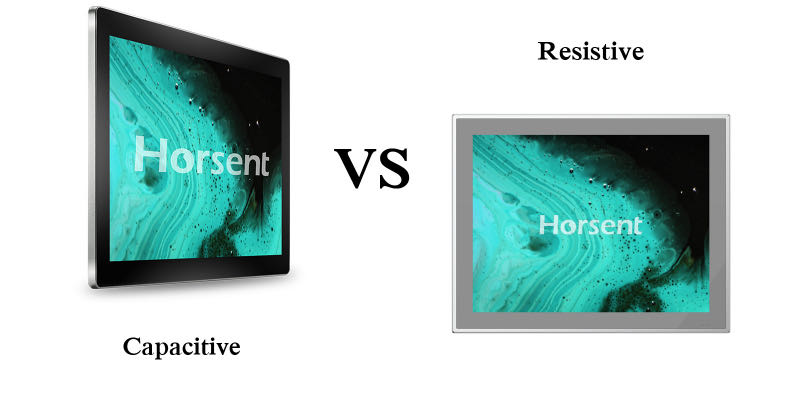
Five Major Functions That Car Audio Should Have
If you're in the market for a new car audio system or simply looking to upgrade your current setup, you know that the options can be overwhelming. With technology advancing at a rapid pace, modern car audio systems are more than just a radio and a pair of speakers. They've become sophisticated multimedia hubs that can enhance your driving experience significantly. To help you sift through the myriad of features, we've compiled a list of the five major functions that your best car audio system should have.
1.Android Auto Apple Carplay Head Unit
In a world where our lives are increasingly managed by the smartphones we carry, it's no surprise that the desire for seamless integration between our mobile devices and our vehicles has become a top priority. Enter Android Auto and Apple CarPlay – two systems that have revolutionized the in-car experience. Let's dive into how these technologies have transformed the head unit, turning the dashboard into a hub of connectivity and convenience.

(1) The Rise of Smartphone Integration in Vehicles
Modern vehicles are no longer just a means of transportation; they are mobile command centers that connect us to our digital lives. The head unit, the centerpiece of a car's audio and information system, has evolved to keep pace with this trend. Android Auto and Apple CarPlay have emerged as the leading platforms that bridge the gap between your smartphone and your car's infotainment system.
(2) Understanding Android Auto and Apple CarPlay
Both Android Auto and Apple CarPlay are systems that allow users to mirror certain apps and functions from their smartphones onto the best car stereo head unit display. They provide a driver-friendly interface that offers hands-free control through voice commands, steering wheel buttons, or a touchscreen.
(3) Android Auto: The Google-Powered Interface
Android Auto, developed by Google, is designed to work with Android phones. It offers:
Google Maps: Turn-by-turn navigation with real-time traffic updates.
Google Assistant: Voice control to manage navigation, send messages, and control media.
App Ecosystem: Access to a range of compatible apps such as WhatsApp, Spotify, and Google Podcasts.
(4) Apple CarPlay: The iOS In-Car Experience
Apple CarPlay, on the other hand, is tailored for iPhone users. Key features include:
Apple Maps: Navigation with Siri voice control and traffic information.
Siri: Allows hands-free calling, messaging, and command of CarPlay-compatible apps.
App Integration: Supports apps like iMessage, Apple Music, and third-party apps like Waze and Audible.
(5) Choosing a Head Unit with Android Auto and Apple CarPlay
When selecting a best head unit that supports these platforms, consider the following:
Compatibility: Ensure the head unit is compatible with your smartphone's operating system.
Display: Look for a clear, responsive touchscreen with a user-friendly interface.
Connectivity: Check for options such as Bluetooth, USB ports, and Wi-Fi capabilities.
(6) The Benefits of Android Auto and Apple CarPlay
The integration of Android Auto and Apple CarPlay in good head units offers numerous advantages:
Reduced Distraction: They allow drivers to focus on the road while accessing music, navigation, and communication.
Familiar Interface: Users enjoy the same experience they're used to on their smartphones, reducing the learning curve.
Regular Updates: Both systems are frequently updated, adding new features and improving user experience.
(7) Installation and Setup
Installing a head unit with Android Auto or Apple CarPlay can be straightforward, but it's essential to ensure compatibility with your vehicle. Many car manufacturers now offer these systems as standard features, but aftermarket options are also available for older vehicles.
(8) The Future of In-Car Infotainment
The integration of Android Auto and Apple CarPlay is just the beginning. As technology advances, we can expect even more sophisticated systems that offer greater personalization, improved voice recognition, and more comprehensive app integration.
(9) Conclusion: The Smart Upgrade for Your Drive
Android Auto and Apple CarPlay have set a new standard for in-car technology. By bringing the power of smartphones into the dashboard, they've created a connected, intuitive, and safer driving experience. Whether you're navigating to a new destination, enjoying your favorite playlist, or sending a voice text, these systems ensure that your focus remains on the road while staying connected to the digital world.
So, if you're looking to upgrade your vehicle head unit, consider the smart integration offered by Android Auto and Apple CarPlay – it's an investment in connectivity, convenience, and safety.
2.Touch Screen Car Stereo With Bluetooth
In the digital age, the car stereo is no longer just a radio receiver; it's a multimedia hub central to the in-car experience. With the advent of touch screen car stereos equipped with Bluetooth technology, drivers now have unparalleled access to entertainment, information, and connectivity, all at their fingertips. Let's explore how this technological marvel has redefined the way we interact with our vehicles.

(1) The Evolution of Car Stereos
Gone are the days of fiddling with knobs and buttons to tune into your favorite radio station or adjust the volume. The modern touch screen cd player for car with bluetooth has transformed the dashboard into a sleek, interactive console that responds to the lightest touch. Coupled with Bluetooth connectivity, it offers a level of convenience and functionality that was once the stuff of science fiction.
(2) Why Choose a Touch Screen Car Stereo with Bluetooth?
Seamless Connectivity: Bluetooth allows for wireless connection between your car stereo and any Bluetooth-enabled device. This means you can stream music from your smartphone, make hands-free calls, and even access your contact list without ever needing to physically connect your device.
Intuitive Interface: Touch screen interfaces are designed to be user-friendly, with large icons and easy-to-navigate menus. This makes it simple to switch between functions, browse playlists, or select navigation options while keeping your eyes on the road.
Enhanced Audio Quality: Modern touch screen car stereos are equipped with advanced sound systems that deliver crisp, clear audio. Bluetooth technology also ensures that there is no loss of sound quality, providing a listening experience that rivals high-end home audio systems.
Versatility and Entertainment: With a car stereo with cd player, you're not limited to radio or CDs. You can access a variety of multimedia options, including streaming services, podcasts, audiobooks, and even videos (for passengers, of course).
(3) Features to Look for in a Touch Screen Car Stereo with Bluetooth
When shopping for a touch screen car stereo with Bluetooth, consider the following features to enhance your in-car experience:
Screen Size and Resolution: A larger screen with high resolution will make it easier to read and operate.
Smartphone Integration: Look for systems that support Apple CarPlay and Android Auto for seamless smartphone integration.
Hands-Free Operation: Ensure that the cd car stereo supports voice commands for safe, hands-free operation.
Sound Customization: Advanced equalizers and sound settings allow you to tailor the audio output to your preferences.
Expandability: Check for additional inputs and outputs, such as USB ports and auxiliary inputs, for more connectivity options.
(4) Installation and Compatibility
Before purchasing a touch screen car stereo with Bluetooth, ensure it's compatible with your vehicle. Installation can range from straightforward to complex, depending on the make and model of your car and the stereo system. It's often best to consult with a professional to ensure proper fit and function.
(5) The Future is Touch
As technology continues to advance, touch screen car stereos with Bluetooth will become even more sophisticated. We can anticipate features like voice recognition, gesture controls, and AI personal assistants to become standard, further enhancing the driving experience.
(6) Conclusion: A Touch of Modernity
A touch screen car stereo with Bluetooth is more than just an upgrade; it's a transformation of your vehicle's interior into a modern command center. It brings together convenience, entertainment, and connectivity in a package that is intuitive and accessible. Whether you're commuting to work, setting off on a road trip, or simply running errands around town, this technology ensures that your journey will be safer, more enjoyable, and absolutely connected.
Embrace the future of in-car entertainment and consider a touch screen car stereo with Bluetooth for your next vehicle upgrade. It's an investment that will keep you in tune and in touch, no matter where the road takes you.
3.Car head unit usb port
In the modern vehicular landscape, the multimedia car stereo has evolved into a multifunctional device that serves as the nerve center of automotive entertainment, information, and connectivity. One small but mighty feature has become a cornerstone of this evolution: the USB port. This seemingly simple addition to car head units has revolutionized the way we interact with our vehicles. Let's delve into the world of car head units with USB ports and discover how this feature can significantly enhance your driving experience.

(1) The USB Port: A Gateway to Functionality
The integration of USB ports into car auto head unit has opened up a world of possibilities for drivers and passengers alike. From charging devices to playing media, the USB port is your gateway to a more convenient and connected journey.
(2) Charging On-the-Go
One of the primary uses of a car carplay wireless head unit USB port is charging mobile devices. Long commutes and road trips can drain your device's battery, but with a USB port, you can ensure your smartphone, tablet, or other USB-powered devices remain charged and ready to use.
(3) Media at Your Fingertips
Beyond charging, a USB port allows for the direct playback of music, podcasts, and audiobooks from a USB drive. This bypasses the need for a Bluetooth or auxiliary connection, providing a direct link to your head unit for uninterrupted audio enjoyment.
(4) Smartphone Integration
Many modern good head unit for car with USB ports offer support for smartphone integration technologies like Apple CarPlay and Android Auto. These systems allow you to mirror your smartphone's interface on the head unit's display, giving you access to navigation, messaging, music, and more in a driver-friendly format.
(5) The Advantages of USB Connectivity
Superior Sound Quality: USB connections can transmit high-quality digital audio without the interference that sometimes plagues wireless connections or the limitations of analog auxiliary cables.
Ease of Use: Playing media from a USB stick is as simple as plugging it in. The head unit automatically reads the data and allows you to navigate through your files using the touch screen or button controls.
Firmware Updates: Some head units can receive firmware updates via the USB port, ensuring your system stays up-to-date with the latest features and improvements.
Versatility: USB ports can support a wide range of devices, making them a universal solution for connectivity needs.
(6) Choosing the Right Car Head Unit with a USB Port
When selecting a car head unit with a USB port, consider the following factors:
Number of Ports: More USB ports mean more devices can be connected simultaneously.
Location: Ensure the USB port is in a convenient spot for easy access while driving.
Power Output: Check the USB port's power output to ensure it can charge your devices efficiently.
Compatibility: Make sure the head unit is compatible with various file formats for hassle-free media playback.
(7) Installation Considerations
Installing a new car screen head unit with a USB port can range from a simple DIY project to a task that requires professional assistance, depending on your car model and the head unit's specifications. Always refer to the manufacturer's guidelines or consult with an expert to ensure proper installation.
(8) The Future of USB in Cars
As technology progresses, the role of the USB port in car head units will continue to grow. We can expect faster charging standards, more sophisticated data transfer capabilities, and even greater integration with vehicle systems.
(9) Conclusion: The USB Port as a Modern Essential
The car best head unit for sound quality USB port has become an indispensable feature for today's drivers, offering a blend of convenience, quality, and connectivity. It's a small component that makes a big impact, transforming your car's dashboard into a hub of digital activity. Whether you're a tech enthusiast or simply someone who appreciates the practicalities of modern technology, a car head unit with a USB port is a wise investment in your automotive experience.
Embrace the power of connectivity and consider upgrading to a car head unit with a USB port. It's a simple step that can make every journey more enjoyable and connected, keeping you and your passengers entertained, informed, and fully charged, whatever the destination may be.
4.Reversing Camera Input
In an age where technology and safety intersect more than ever, the reversing camera has become a crucial component of modern driving. This simple, yet transformative feature has reshaped the way drivers interact with their vehicles, particularly when it comes to the once-daunting task of reversing. Let's explore the importance of the reversing camera input in car head units and how it's changing the driving experience for the better.

(1) The Reversing Camera: A Visionary Leap Forward
A reversing camera, also known as a backup camera, is a special type of video camera that's attached to the rear of a vehicle to aid in backing up. It displays a live video feed to the car radio with backup camera, allowing drivers to see what's behind them without craning their necks.
(2) Why Reversing Cameras Matter
Safety Enhancement: The primary buenefit of a reversing camera is the significant increase in safety it provides. By giving a clear view of what's behind the vehicle, it helps prevent accidents that occur when drivers can't see small objects or even people in the blind spot beneath the rear window.
Parking Made Easy: Reversing cameras can make parking, especially parallel parking, a less stressful and more precise endeavor. With guidelines displayed on the car head unit, drivers can gauge distance and navigate into tight spaces with confidence.
Lower Insurance Costs: Some insurance companies offer discounts for vehicles equipped with safety features like reversing cameras, recognizing their role in reducing the likelihood of accidents.
(3) The Technology Behind Reversing Camera Input
Integration with Head Units: Modern car head units are designed to seamlessly integrate with reversing cameras. When the vehicle is put into reverse, the head unit's display automatically switches to the camera's feed.
Camera Quality and Features: Reversing cameras come in various resolutions and with different features, such as wide-angle lenses, night vision, and on-screen guidelines that adjust as you steer.
(4) Types of Reversing Camera Inputs
Wired Connections: The most reliable type of connection, wired reversing cameras send video signals directly to the head unit without interference.
Wireless Connections: These offer easier installation and reduce the need for extensive wiring but can be prone to signal interference.
(5) Choosing the Right Reversing Camera System
When selecting a reversing camera system, consider these factors:
Camera Quality: Higher resolution cameras will provide a clearer picture, making it easier to see obstacles.
Field of View: A wider field of view will show more of what’s behind you, but be aware of potential fish-eye distortion.
Low-Light Capability: Cameras with good low-light performance or infrared night vision are essential for safe reversing at night or in dark areas.
Weatherproofing: Ensure the camera is durable and weatherproof to maintain functionality in all conditions.
(6) Installation Insights
While some drivers opt for professional installation to ensure their reversing camera system is correctly integrated, many reversing camera kits are designed for DIY enthusiasts. Wireless systems, in particular, are often more straightforward to install, but it's crucial to follow all instructions carefully and consider the camera's positioning for optimal visibility.
(7) The Future of Reversing Cameras
As technology advances, we can expect even more sophisticated reversing camera systems with features like panoramic views, motion sensors, and integration with other safety systems like automatic braking.
(8) Conclusion: A Clear View to Safer Reversing
The reversing camera input has become more than just a luxury—it's a vital tool for safe driving. By providing drivers with a clear view of what's behind their vehicle, reversing cameras reduce the risk of accidents and make maneuvering
5.Resistive Touch Screen VS Capacitive
In the digital age, touch screens have become ubiquitous, transforming the way we interact with our devices. From ATMs to smartphones, touch screens are an integral part of modern technology. There are two primary types of touch screen technologies that dominate the market: resistive and capacitive. Understanding the differences between these two can help consumers make informed decisions about their touch screen for car dashboard devices.

(1) Resistive Touch Screens: The Pressure Point
Resistive touch screens operate on the principle of pressure. They consist of two conductive layers separated by a small gap. When a user applies pressure to the screen with a finger or stylus, the two layers make contact, creating an electrical circuit and registering the touch.
(2) Advantages of Resistive Touch Screens:
Cost-Effectiveness: Resistive touch screens are generally cheaper to produce than their capacitive counterparts, making them a budget-friendly option.
Stylus Compatibility: They can be used with a stylus or any other object, offering precision input, which is particularly useful for drawing or handwriting.
Durability: They are less susceptible to the effects of water and dust, which can be beneficial in industrial or outdoor settings.
(3) Disadvantages of Resistive Touch Screens:
Clarity and Brightness: The multiple layers can reduce screen clarity and brightness.
Multi-Touch Limitation: They typically do not support multi-touch gestures, which can limit their functionality in modern applications.
Wear and Tear: The top layer can become worn or damaged over time, affecting responsiveness.
(4) Capacitive Touch Screens: The Touch of Finesse
Capacitive touch screens, used in most modern smartphones and tablets, rely on the electrical properties of the human body to detect touches. These screens are made with a layer of material that stores an electrical charge; touching the screen alters the charge at the point of contact.
(5) Advantages of Capacitive Touch Screens:
Multi-Touch Support: Capacitive screens can easily support multi-finger gestures like pinching and swiping, which are essential for modern user interfaces.
Sensitivity: They are highly responsive to the slightest touch, providing a smoother user experience.
Display Quality: Without the need for multiple layers, capacitive screens offer superior clarity and brightness.
(6) Disadvantages of Capacitive Touch Screens:
Cost: These screens are more complex to manufacture, which can make them more expensive.
Stylus Specificity: They require a special type of stylus and cannot be operated with just any object.
Sensitivity to Elements: Performance can be affected by water or other liquids on the screen.
(7) Choosing the Right Touch Screen for Your Needs
The choice between resistive and capacitive car audio touch screens depends on the intended use and environment:
Industrial Use: Resistive touch screens are often better for industrial environments where gloves are worn or precision input is required.
Consumer Electronics: Capacitive touch screens are the standard for consumer electronics like smartphones and tablets due to their multi-touch capabilities and high-quality display.
Cost-Sensitive Projects: For budget-conscious projects, resistive touch screens can offer a significant cost saving.
(8) The Future of Touch Screen Technology
As technology advances, we see developments that blend the best of both worlds, such as capacitive screens that can detect a wider range of inputs or resistive screens with improved multi-touch capabilities.
(9) Conclusion: The Touch Screen Landscape
Resistive and capacitive auto touch screens each have their unique strengths and weaknesses. The choice between them should be guided by the specific needs of the user and the demands of the environment in which the device will be used. As touch screen technology continues to evolve, we can expect innovations that further enhance user experience, combining sensitivity with durability and precision with versatility. Understanding the fundamental differences between resistive and capacitive touch screens is key to navigating this ever-changing landscape and selecting the right technology for your touch-based devices.
6.conclusion
In conclusion, the perfect car audio system is one that brings the joy of high-fidelity sound into the comfort of your vehicle. It should be a system that offers not only superior sound quality but also the connectivity and features that fit into our digital lives. Whether you're an audiophile, a tech enthusiast, or just someone who enjoys the occasional road trip jam session, ensuring your car audio system includes these five essential functions will undoubtedly enhance your in-car audio experience. Remember, the best audio system is one that meets your specific needs and makes every drive a pleasure.
